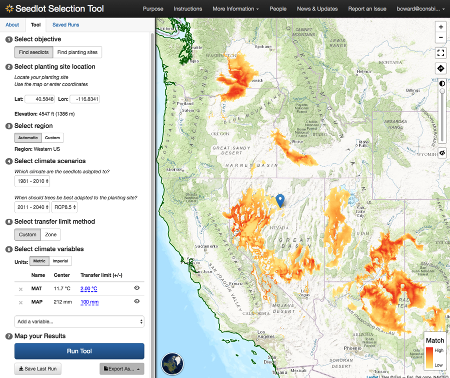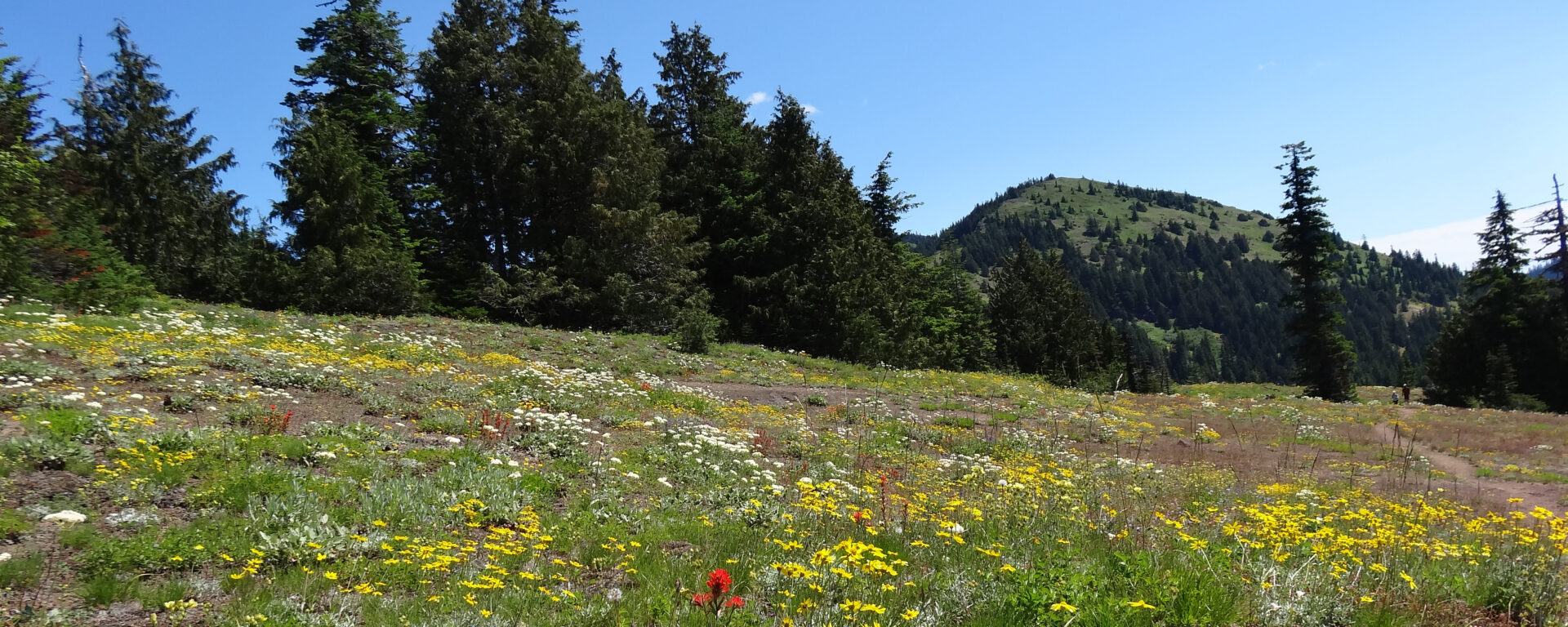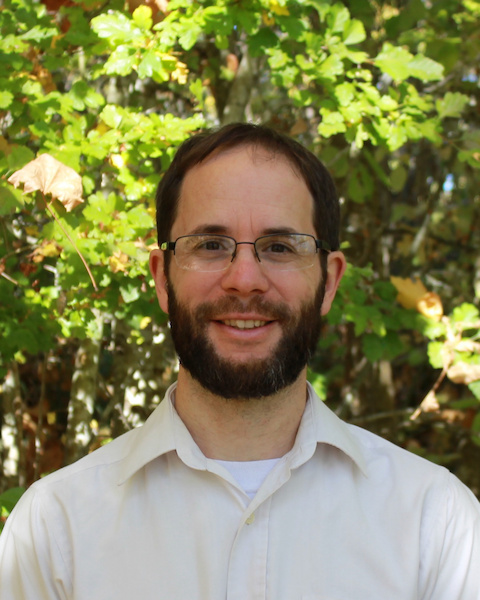The Climate Smart Restoration Tool (CSRT) is an interactive web-based application that allows the user to match current seed sources with future climate conditions.
Conservation Biology Institute is working with the U.S. Forest Service and Oregon State University to develop the Climate Smart Restoration Tool (CSRT), an interactive web-based application that allows the user to match current seed sources with future climate conditions.
Natural resource managers must match the climatic adaptability of their seed sources to the climatic conditions of their restoration sites in order to better ensure successful long-term restoration outcomes. There is an urgent need to adopt climate-smart approaches to ecosystem management, but progress has been slow because landowners and natural resource managers lack readily available, site-specific information on which to act. Existing scientific information has been unavailable at the scale needed by natural resource managers and restoration practitioners.
The CSRT will be designed to (1) easily incorporate new scientific information (e.g., climate projections, physiological thresholds) and (2) allow users to select parameters of interest (e.g., climate change scenarios, and time periods). Climate associated with existing ecoregions and seed zones will be displayed so that natural resource managers can choose the appropriate seed source for their restoration site, or decide where seed from a particular source can be planted in the future. Managers will also be able to view spatial maps of current and future climate, seed zones, ecoregions, and other contextual map layers. The CSRT will provide the ability to download outputs of the tool to PowerPoint slides, PDF documents, and GeoTIFF files in order to share those results with others and perform additional analysis within desktop data processing environments.
Because of the uncertainty in climate change projections, the CSRT is primarily intended as a planning and educational tool. It can be used to explore alternative future conditions, assess risk, and plan potential responses. The tool allows the user to control many input parameters so the results are appropriate for the management practices, climate change assumptions, and risk tolerance of the user.
The CSRT will be implemented following the same method used to develop and publish the Seedlot Selection Tool (SST; https://seedlotselectiontool.org/sst/; Figure 1). We will develop a fully functional and widely available version of the CSRT using the latest open-source software and incorporating mechanisms for its long-term maintenance. We will work collaboratively with key stakeholders to ensure that the application is effective in meeting their needs, using a variety of mechanisms including webinars and targeted outreach.

Screenshot of the Seedlot Selection Tool (SST), a forest-centric tool that helps natural resource managers match forest tree seed sources and climate conditions at planting sites.





